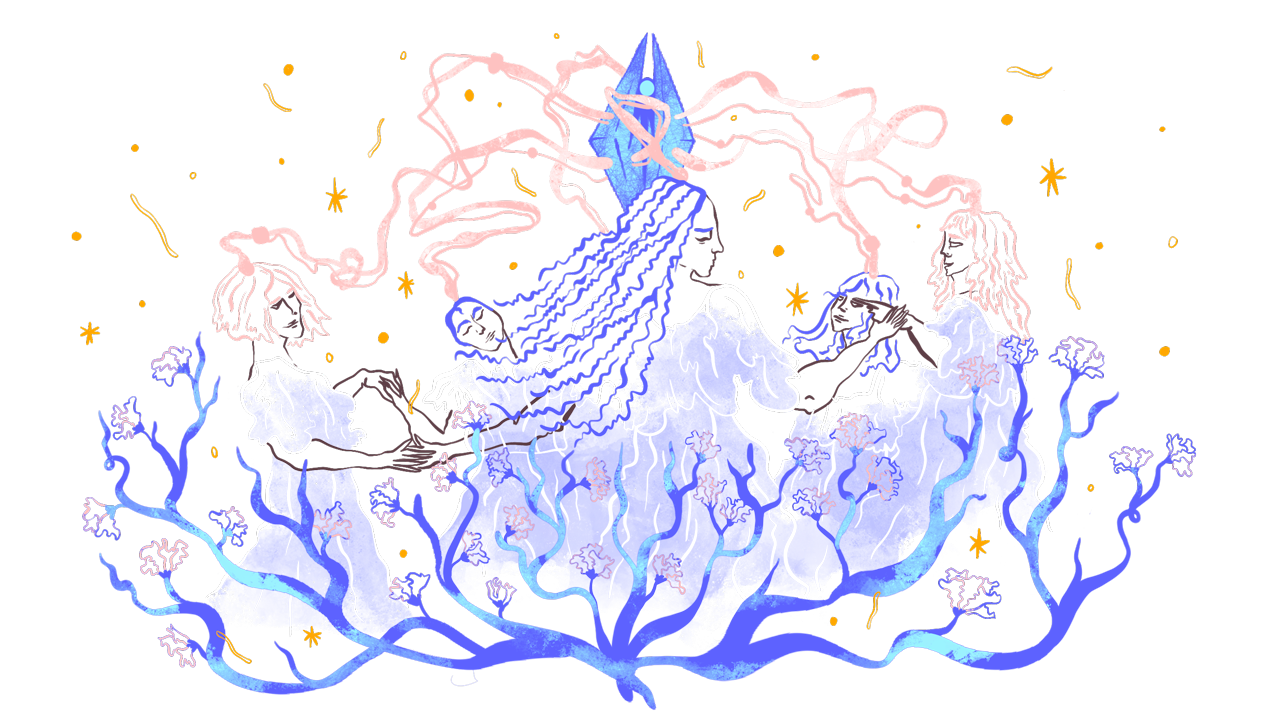Tectonics of Hope
Mapping resistance and regeneration in and beyond digital colonialism. By Kit Kat Braybrooke and Fieke Jansen

Resist: To exert force in opposition.
Regenerate: To be reborn; to create anew.
What do spaces of resistance and regeneration look like in a world where neocolonialism proliferates across digital terrains via an internet which is increasingly marred by epistemic violence against ecosystems of local and indigenous knowledge, species extinction and ecocide, surveillance technologies, hate speech, receding minority rights and fake news? How can we resist the perpetuation of ancestral injustices and inequalities while building new worlds within worlds1 – the kind that subvert hegemonic power dynamics, shift old logics and ways of being, and bring about systems change?
To escape the familiar trap of making things a little less bad and instead move towards building something entirely new, we must confront big questions such as these while inverting the dominant racial and gendered power relations in ways that challenge and transform.
Yet while it is urgent that we act, it can feel overwhelming and daunting. At the Digital Futures Gathering we decided to start small – by first looking at what inspired us as community organisers, racial justice and digital rights advocates, practitioners and researchers. What exactly, we asked, does hope look like, and where can we find it?
The map of ‘Technological Cartographies’ by Joana Varon of Coding Rights offers a different view of the world if we situate global geographies around the extraction of materials, labour, e-waste and internet access. At our session, we decided to focus on creating a new layer for the map which moved beyond highlighting ongoing injustices, to amplify the essential work already being carried out by around the world by communities on the ground who are intervening in these flows. The lively conversations that followed revealed how many things become possible when we dig beneath the surface, even just a little, and see what has been there all along.
We asked participants to describe in their own words what kinds of spaces of resistance and regeneration (from physical bricks-and-mortar to virtual networks) were already operating in their regions. Key words used to describe these spaces included ‘mutual aid, ‘refusal’, ‘feminism’, ‘decolonising’, ‘rebuilding’, ‘care’ and ‘action’. All the spaces were described as sites of solidarity, representing and standing alongside those experiencing harm and oppression and fighting injustices, while offering safe environments to heal, gather strength and rebuild.
Examples from the physical world ranged from festivals and newly formed gig worker unions, to the essential role played by libraries and community centres in fostering local resilience. The majority operated at the intersection of resistance to business-as-usual and active regeneration. While some, such as Furtherfield, Mwasi-Collectif Afroféministe and Detroit Community Technology Network, focused on the important work of reaching out to local communities and neighbourhoods, many others, such as Whose Knowledge, Right to Repair and Radical Riders, were located in mixed digital and material terrains and noted for their success in working transnationally – bridging cultures, languages, disciplines and borders.
Together, the spaces which comprise the new layer of the ‘Technological Cartographies’ map reveal how refusal – the power of saying ‘No!’ to the discourses, values, approaches and assumptions of the status quo which proliferate intersectional inequalities – can also foster healing when combined with regeneration. The participants of this session and the spaces that matter to them show us that to tackle the significant challenges that lie ahead, we need less talk and more collective action. We need to move slowly, take care of ourselves and others, and nourish the spaces in our communities that enable this essential work to happen. In so doing, we will be able to respond quickly when it matters, with a beautiful and powerful plurality of actions, participants, perspectives and approaches. Through them, we can understand the many ways that hope is resistance.
The authors would like to give a special thanks to their friends and their partners in crime and thought who contributed such inspiring ideas to this session of resistance and regeneration.
Dr Kit Kat Braybrooke is a Senior Researcher at Habitat Unit, Technische Universität Berlin, as well as director of Studio We&Us.
Dr Fieke Jansen is Postdoc at the Data Justice Lab at Cardiff University.
1: As feminist technoscientist Donna Haraway (2016) puts it, “It matters what thoughts think thoughts… it matters what worlds world worlds” (2016). In: Staying with the trouble: Making kin in the Chthulucene. Durham: Duke University Press.
